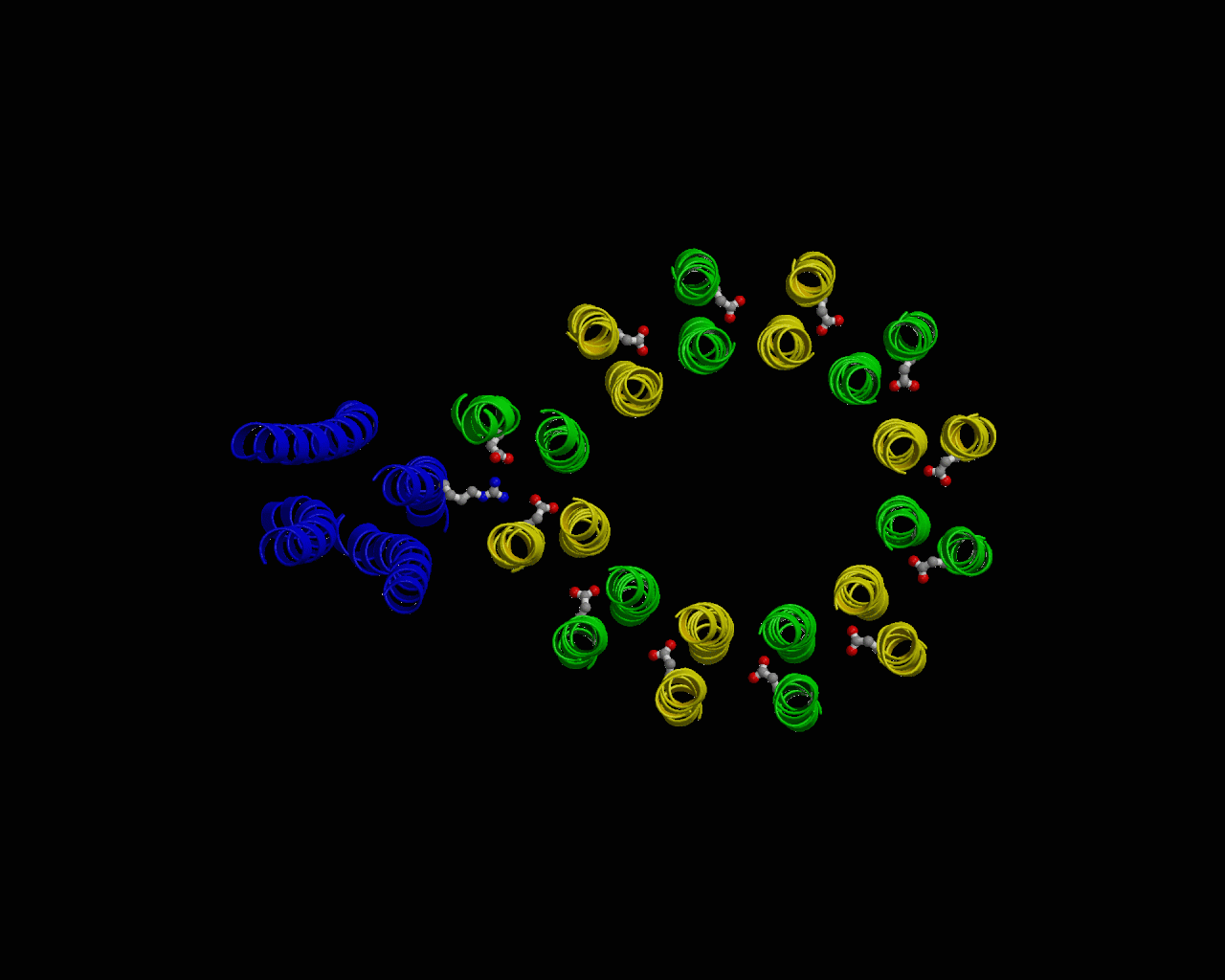

An animation* of c ring rotation, driven by cycles of protenation and deprotenation of Asp 61 on each of the outer, C-terminal helices of c subunits. In contrast to other views presented in this exhibit, this perspective is "bottom-up", looking from the F1 complex toward the membrane and through Fo. Rotation of the c ring in this view is thus seen as counterclockwise. The Arg 210 sidechain on an alpha helix of the a subunit is seen in close proximity to two Asp 61s, with twisting of the C-terminal helices occuring as deprotonation and reprotenation proceeds. As a helix with a protonated Asp 61 rotates from the hydrophobic environment of the membrane (not shown) into the hydrophillic environment of Arg 210, a transient deprotonation is favored and the proton thus released proceeds toward F1. Deprotenation is accompanied by a pronounced twisting of the C-terminal helix, which then untwists with reprotonation, which permits the newly reprotonated, now neutral Asp 61 to reenter the hydrophobic environment of the membrane. C-terminal helix twisting is thought to play a role in spinning the c ring. * Animation provided by the Girven laboratory (The Albert Einstein College of Medicine): http://www.bioc.aecom.yu.edu/labs/girvlab/ATPase/Fo_movie_opt.gif |